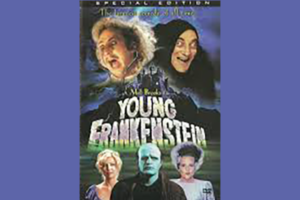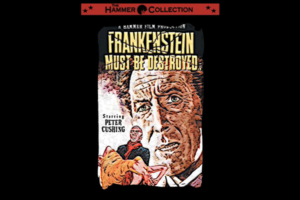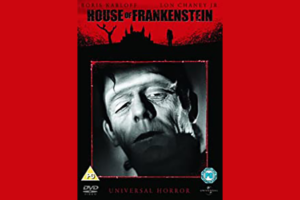
It’s alive, it’s alive


Today’s movie is Frankenstein (1910). As I am I apt to do I was cruising Amazon Prime looking for something to watch and I stumbled across the original film version of Frankenstein (1910). It was a Thomas Alva Edison production. He is best known for inventing the phonograph, the movie camera, and a whole bunch of other stuff so I gave it a watch. It was a pretty good movie, and it followed the Mary Shelley novel pretty well until the end. This is the first film adaptation of the Mary Shelly novel “Frankenstein; or, The Modern Prometheus.[1]”
This is a short only about 12 minutes long or so. But what was really interesting about the film was its’ use of camera tricks. The reason being that they had to invent everything they wanted to do because there was really no one to look too. For example, they reversed the film in one part to great effect. They also used images in the mirror to show the entry of characters and for the transmutation of characters. They craftily used the magician’s trick over covering an item rather than removing it to hide the monster.
This silent short has a pretty low rating of 6.5 on iMDB.com[2]. Only 54 percent of the audiences liked it on rottentomatoes.com[3]. So, I guess I am in the minority on this one.
Actors – Frankenstein (1910)
Only three actors were listed on iMDB.com for this movie, but I am pretty sure somebodies’ father was cast also. Plus, there was a servant and another guy. All three of the principals were uncredited. They are Augustus Phillips, Mary Fuller, and Charles Ogle
Augustus Phillips played the role of Dr. Frankenstein but I think the monster was he dissertation and he may not have passed. Phillips was born in 1874, and he died in 1952. This was his first film, but he amassed 160 films between 1910 and 1921.
Mary Fuller was in the role of Elizabeth. She was born in 1888 and died in 1973. She amassed an amazing 226 film credits between 1907 and 1917. In 1917, she disappeared. A writer found her in 1924 living in Washington, D.C. with her mother. However, she soon disappeared again. In 1973, it was discovered that she had died in a mental hospital of natural causes. It has never been determined why she was in the hospital or what she did in all those missing years.
Charles Ogle played The Monster. Ogle was born in 1865 and died in 1940. He performed in a striking 327 films between 1908 and 1926. His films include The Ten Commandments (1923) and The Thundering Herd (1925). The role in this film makes him the first film actor to ever play the Monster.
Story – Frankenstein (1910)
Frankenstein (Augustus Phillips) says farewell to his father and his beloved Elizabeth (Mary Fuller) as he leaves for university. Once away at school, he becomes, shall we say obsessed, with the secrets of life. One night, he writes Elizabeth saying he will be glad to get busy with her, once he solves this little life problem.
Frankenstein has a big cabinet in his room with a huge caldron inside. He also has a skeleton sitting in a chair, but I am not sure if that is metaphorical or not. He begins to create his “perfect human” in the cauldron. Frankenstein mixes his chemicals. The Monster (Charles Ogle) begins to form in a smoky haze of the cauldron. What the filmmakers did was create a model of the Monster with a skeleton inside. Next, they burned the model. In the film, this sequence was shown in reverse creating the effect of the Monster forming from nothing. It is a great scene, and I found myself leaning in and watching the details.
Frankenstein utters the lines, “it’s alive, it’s alive.” Frankenstein sees that the Monster is well, monstrous. Frankenstein runs from the cabinet and flops on his bed. Create a monster, leave it in the next room, and go to bed? Not a good plan.
I want to stop and talk about the look of the Monster. The film quality is very bad. Somehow, the Monster reminds me of Kikuchiyo the wild samurai played by Toshirô Mifune in the Seven Samurai (1954). I also thought at first that the Monster had a flat head, but an examination of a better photograph showed that it was only the band where the wild hair attached. The makeup and the hairstyles are very reflective of that used in Kabuki theater.

Anyway, the Monster comes in the bedroom and stands over its’ creator. Frankenstein passes out on the floor. Frankenstein’s servant comes, and the Monster flees unseen.
Frankenstein heads home, and under the care of Elizabeth, he begins to shake the demons that haunt him. Many reviews take this to mean that Frankenstein could only create the monster because his mind was flooded with evil. This is pretty well born out at the end.
One day, Frankenstein is in his room reading, and Elizabeth enters. She is first shown in the mirror. She then comes into the frame with Frankenstein. She talks of their pending marriage. When she leaves the room, the Monster is shown entering when he appears as a reflection in the mirror. The Monster complains that Frankenstein has Elizabeth but where does he fit. Or pantomimes to that effect. When Elizabeth returns, the monster hides behind a curtain.
Once Elizabeth leaves, the Monster attacks but he finally sees himself in the mirror. The Monster is horrified by his own appearance. The Monster flees.
Later, Frankenstein and Elizabeth are married. There are a lot of actors at the wedding. At last, the couple is alone. Frankenstein is putting out the candles in the room with the huge glass windows when the Monster shows up. The Monster enters the room where Elizabeth is alone. She runs out in horror to the glass room with the Monster close behind. Frankenstein begs the Monster not to hurt Elizabeth. Frankenstein gets all snotty with the Monster, so it runs away.
The Monster ends up in the bedroom and looks with anguish at its self in the mirror. Suddenly, the Monster pops inside of the mirror. Another good camera trick. Frankenstein comes in and faces the Monster in the mirror driving it away. The image of the Monster is replaced with that of Frankenstein. Another good camera trick.
Frankenstein and Elizabeth are happy, and the Monster is out of their lives and out of Frankenstein’s head.
Well, I don’t think I could sleep in that room until the mirror was gone. Love the house honey, we’re moving.
World-Famous Short Summary – People that create monsters shouldn’t have glass doors.
Beware the moors
[1] https://en.wikipedia.org/wiki/Frankenstein_(1910_film)
[2] https://www.imdb.com/title/tt0001223
[3] https://www.rottentomatoes.com/m/10000583_frankenstein










Leave a Reply
Your email is safe with us.